I found a good material from Pre-K Pages with a farm team.
Visit their shop for the Farm Lesson Plan Bundle
Mötespunkt för pedagoger att dela naturvetenskapliga idéer
I found a good material from Pre-K Pages with a farm team.
Visit their shop for the Farm Lesson Plan Bundle
A THINKING ROUTINE FROM PROJECT ZERO, HARVARD GRADUATE SCHOOL OF EDUCATION
This routine encourages students to make careful observations and thoughtful interpretations. It helps stimulate curiosity and sets the stage for inquiry.
Use this routine when you want students to think carefully about why something looks the way it does or is the way it is. Use the routine with a relevant object (such as an artwork, image, artifact, chart, video, etc.) at the beginning of a new unit to motivate student interest, or try it with an object that connects to a topic during the unit of study. Consider using the routine with an interesting object near the end of a unit to encourage students to further apply their knowledge and ideas.
Once you present the object to your students, give them time to observe it. It may be useful to explain that they are first going to describe exactly what they see, not what they think they see. In the second step when students describe what they think about what they’re seeing, you could ask them follow-up questions like, “What else is going on here?” or “What do you see that makes you say that?” These questions help move students away from giving unsupported opinions encouraging them instead to use evidence to explain their thoughts. In the third step, help students articulate what they are wondering by asking them what questions remain for them.
The routine generally works well in a group discussion. You may want to document the students’ responses and post them in a place where all students can see them to encourage future consideration. When doing this as a group, you may want to ask students to try the routine quietly on their own first (perhaps documenting their own thinking in writing) before discussing in a group.
Poster with the three questions: See think wonder (PDF, 280 kb)
This thinking routine was developed as part of the Visible Thinking
project at Project Zero, Harvard Graduate School of Education.
Explore more Thinking Routines at pz.harvard.edu/thinking-routines

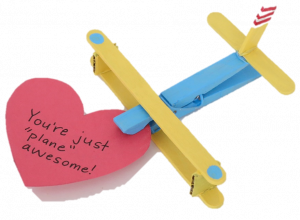
Use the clothespin to hold onto a little paper heart with a message.
For each plane, you’ll need two popsicle sticks, one clothespin, and one mini popsicle stick.
Cut cardboard segments for the struts between the wings of the bi-plane. Make the cardboards segments just tall enough that the top wing will sit ABOVE the clothespin and not attached to it. That will allow you to still operate the clothespin to insert the paper heart.
Cut a segment of a popsicle stick to be a tail. NOTE – the photo shows the popsicle stick cut straight across, but if you cut the tail at an angle, it looks better.
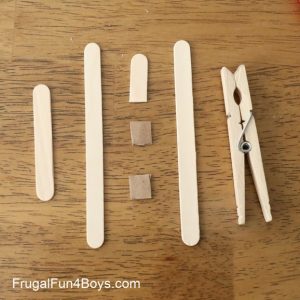
We found that it was easier to glue the plane together first before painting. That way, you can cover any sloppy glue areas with paint.
*Don’t glue the popsicle stick wing to the top of the clothespin, or the clothespin won’t open. Glue it to the cardboard struts.
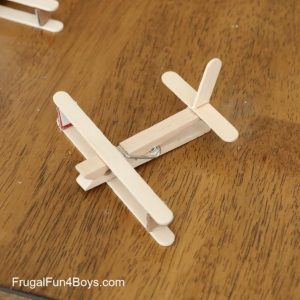
We used acrylic paint, and I really think that’s the best option. Just make sure to cover up clothes, etc. when working with acrylic because it won’t wash out.
Also, another idea – it might be fun to add a magnet to the belly of the plane and put it on the refrigerator!
Thanks to FrugalFun4Boys for the idea!
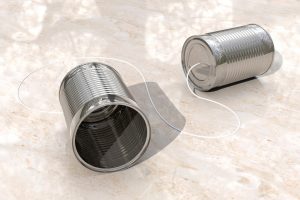
Use a pin to make a hole in the bottom of each mug.
Pull the string through the holes through both cups. Make sure the bottoms of the cups are facing each other.
Tie a paper clip at each end of the string
Pull the string so hard with your friend that the paper clips hit the bottom of the mugs.
Take turns talking into the mug and listening by placing the mug over your ear.
The sound travels through the air in waves. When you speak, the mug picks up sound waves, after which they move the string along with your friend’s mug.
This can also be done when several mugs are connected by string. Make another landline phone out of two mugs and tie the phones together to get a landline phone for four.
Supplies
How to Make Frozen Bubbles
For best bubble crystallization it needs to be at least -10C outside. We did this at -35C to -45C. The most important part is that there needs to be no wind.
Making the Special Frozen Bubble Juice Recipe
Making the Bubble Blaster

Freezing Bubbles
Now it is time to bundle up and head outside. Find a nice place, preferably with some fresh snow.
Using the bubble blaster, dip the end of the straw into the bubble juice, then squeeze the bottle to “blow” and create your bubble. Set the bubble on the snow and watch it crystallize. You can also drop the bubbles and watch them freeze but when they land, they are more likely to break.
Tricks to Make the Bubbles Freeze Without Breaking
Make sure your bubble juice is at least one inch deep. This allows the inside of the straw to be coated nice and high inside allowing you to create some good-sized bubbles.
The trick to making the bubbles freeze without breaking is to get them off the straw before they start to crystallize and freeze. So, blow the bubble, then release the bottle so the bubble detaches before it starts to freeze. The time you have will vary based on the temperature.
Try and set the bubble down gently. It is fun to watch them fall, but the force of the air can cause the frozen bubble to break and landing on the ground usually breaks the bubbles if falling does not do it. For best results blow the bubble onto some snow.
Make sure there is no breeze at all. This is critical. Find a sheltered spot and make sure the kids are not blowing or creating any breeze. This will cause the bubbles to shatter.
Have a nice soft-landing spot for the bubbles. We found a railing with a fresh layer of snow was perfect!
Building Frozen Bubble Towers
If you do everything right you can turn this into a fun challenge to see who can build the biggest frozen bubble tower, or who can make the longest line of bubbles, or ten bubbles in a row. Lots of opportunities for some fun, frozen competition!
The Science Behind Freezing Bubbles
After years of failures trying to get bubbles to freeze, I ended up learning a LOT about how to make this happen successfully.
First, temperature is your friend and your enemy. You need to keep everything cold and that is why we needed to create our bubble blaster. The air in our lungs is too warm and the difference in temperature between the air outside and the air we blow out of our lungs is too great and leads to breaking. Remember warm air expands! So, when you blow into the bubble juice, what is that warm air going to do? Expand and break your bubble!
That is also why we want to chill our bubble juice, to bring it closer to the outside temperature.
You want nice strong bubbles to really make this experiment work. To freeze up nice and solid (some of our bubbles are still there days later!), you need a thick bubble juice. The corn syrup provides that nice thickness we need in our juice to make a strong bubble. After making our bubbles if we gently knocked them free, they would roll across the ground like marbles!
Those gorgeous crystal formations you see on the bubbles is the process of crystallization. This is caused by the freezing process but is helped along by the sugar. This gives us some gorgeous frozen bubbles.
Of course, the final ingredient is dish soap which helps create the bubbles!
Idea taken from STEAMpoweredFamily
If you want tips how to document it all look at: ”How to Shoot Frozen Soap Bubbles”
Play with the Christmas lights.
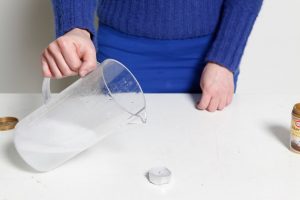
When you add the soda to the vinegar, a chemical reaction happens. The reaction forms water and carbon dioxide gas. The gas is heavier than air and sinks downwards. We can’t see the gas, which makes it look magical. When you tilt the jug towards the light, some of the gas comes out, because the gas is heavier than air it pushes the air down and smothers the flame. Carbon dioxide gas is a product of combustion, therefore carbon dioxide gas does not burn, but manages to extinguish the candle. Other gases, like oxygen, have a property of keeping the fire alive. For example, when you blow on a fire, it burns better because you add oxygen to the fire.
Air contains 21% oxygen and the air we breathe out contains 16% oxygen.
Idea from Heureka Experimentfabrik.
Construct wings, a rocket or what you think is suitable out of construction paper to decorate the rocket with
We need a strong rocket, so I am going to layer it up with another cup.
Just cut the edge of the cup and insert it in another cup to make two layers.
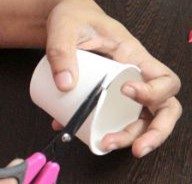
Take a paper cup and put two holes by inserting a needle one point of the cups side to the opposite side of the cup. Such that the two holes remain quite opposite to each other.
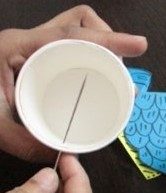
Make sure you are keeping these holes near the brim of the paper cup mouth area. Repeat the same process of making hole on the other side of the cup. That means you are making four holes on the four sides of the paper cup.
Pick two rubber bands and cut them at one point. Then, insert the line of rubber band into any two holes in opposite sides of the cup and tie its end part to keep a knot on both ends. Such that the inserted band will not slip out of the holes.
Repeat the same with the other line of band and keep tight knots into the other set of holes around the cup. Finally, after tying bands to the holes of the cup, you can see plus shape at the open side of paper cup mouth brim.
It is time to decorate our rocket launcher! Keep the paper cup which is referring to the rocket part, upside down.
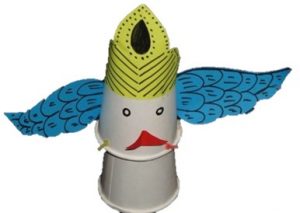
In this step, pick another paper cup and place it in reverse position such that the paper cup is in upside position. We are going to use this inverse paper cup as a base part or launcher for your space rocket.
Now place your rocket on top of the base cup but in upside down position. Make sure the base is also in inverse position. Then, give a gentle pressure just with the bear hands and push the rocket towards the base. After pushing it over the base part, release the pressure on the rocket part.

What Newton’s Third Law of Motion says? It says; “every action has an equal and opposite reaction”. Satisfying the newton’s third law, the rocket part when you push downwards over the base part and release, it flies into the air. That means the amount of pressure you give on the rocket makes it fly with the same amount of energy and force upwards after releasing the pressure.
Idea taken from the GoScienceGirls-blog
Each student selects an animal and searches for information about it to compile an animal card:
| Which animal? | |
| Height: | |
| Mass: | |
| Tail length: | |
| Life span: | |
| Speed: | |
| Color: | |
| Conservation status: | |
Examine together the different characteristics of the animals by standing in a line or in a queue in order of size according to a certain characteristic.
Carry out additional research based on frequencies:
categorise the animals according to their lifespan into categories 1-5 years, 6-10 years, 11-15 years, etc.
Examine the frequencies in the different categories.
Idea from Lumatikka’s material.
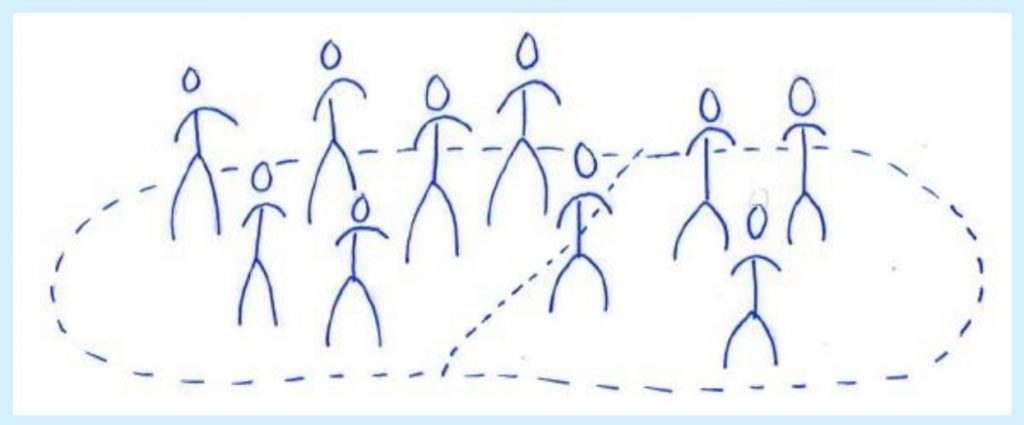
Idea from Lumatikka’s material.
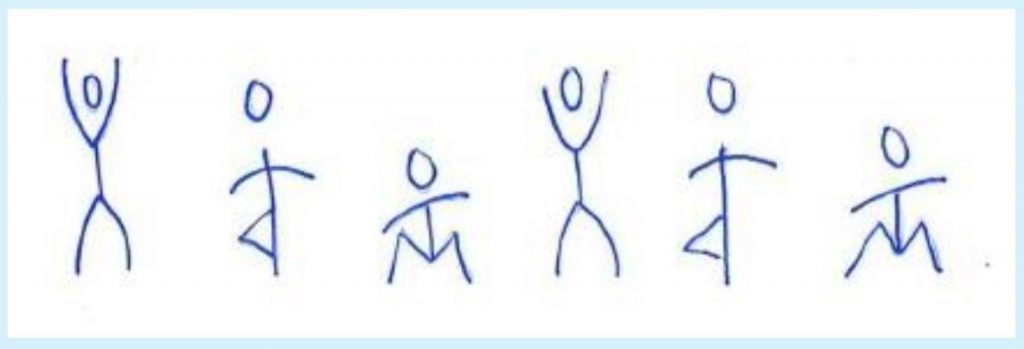
Idea from Lumatikka’s material.